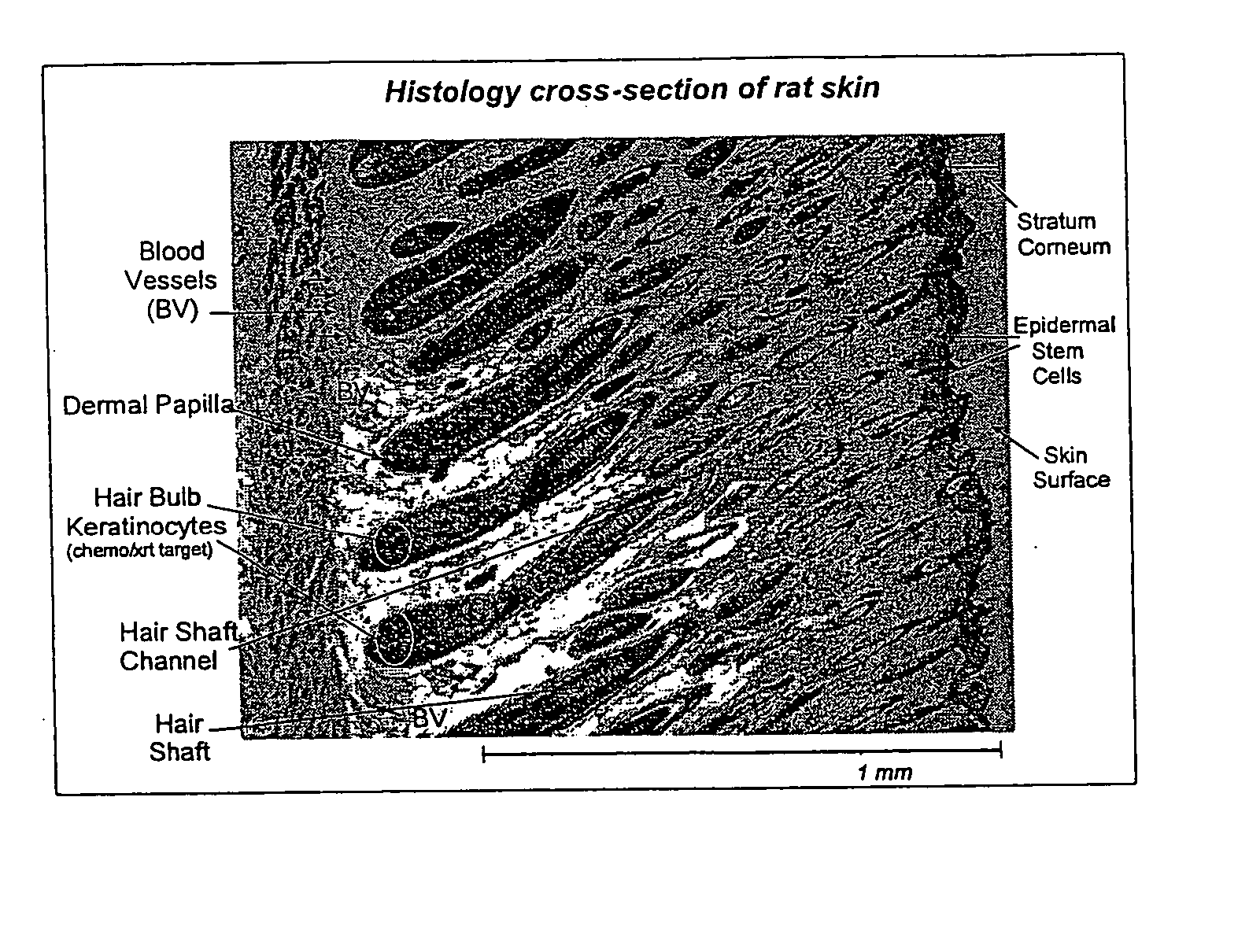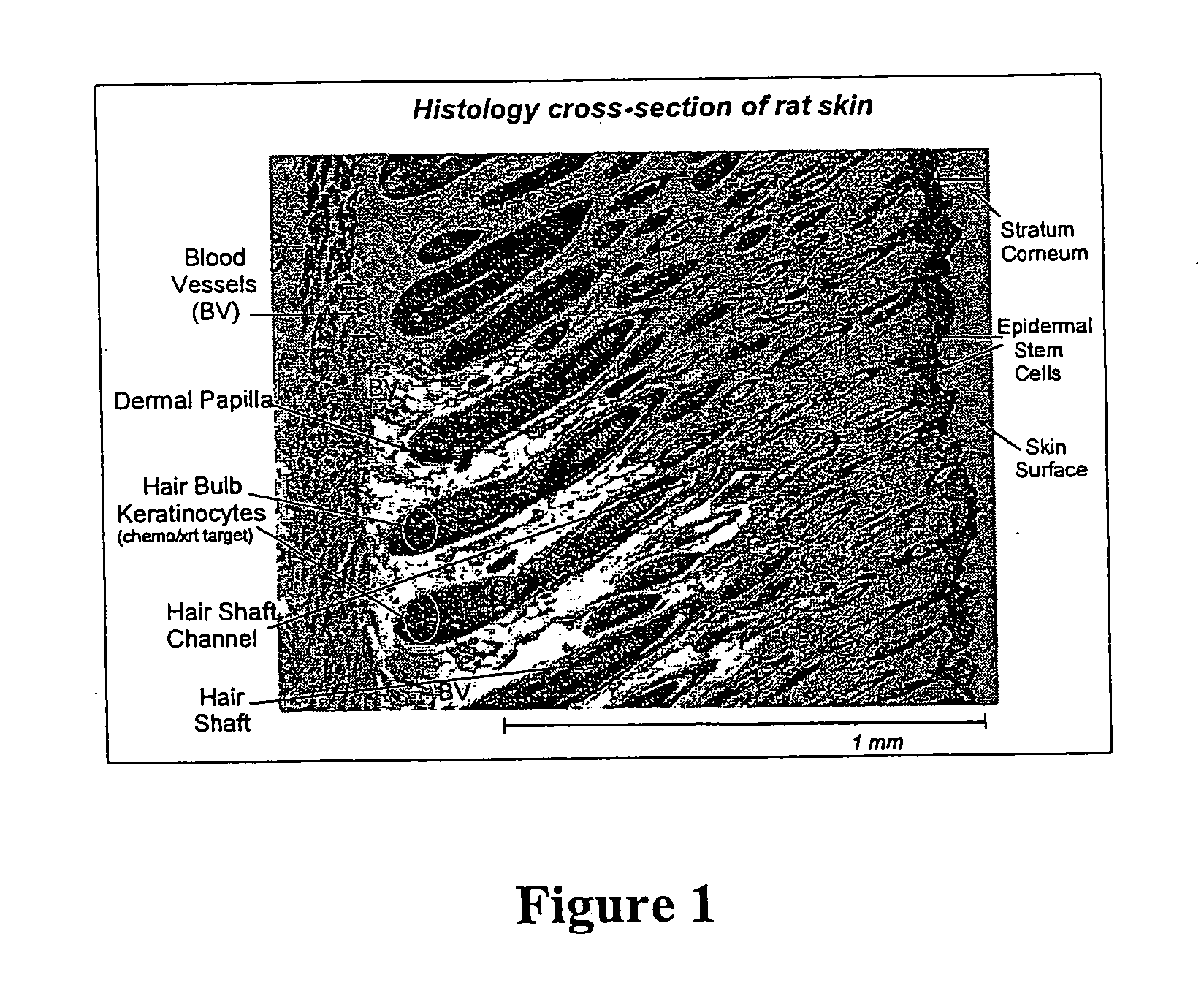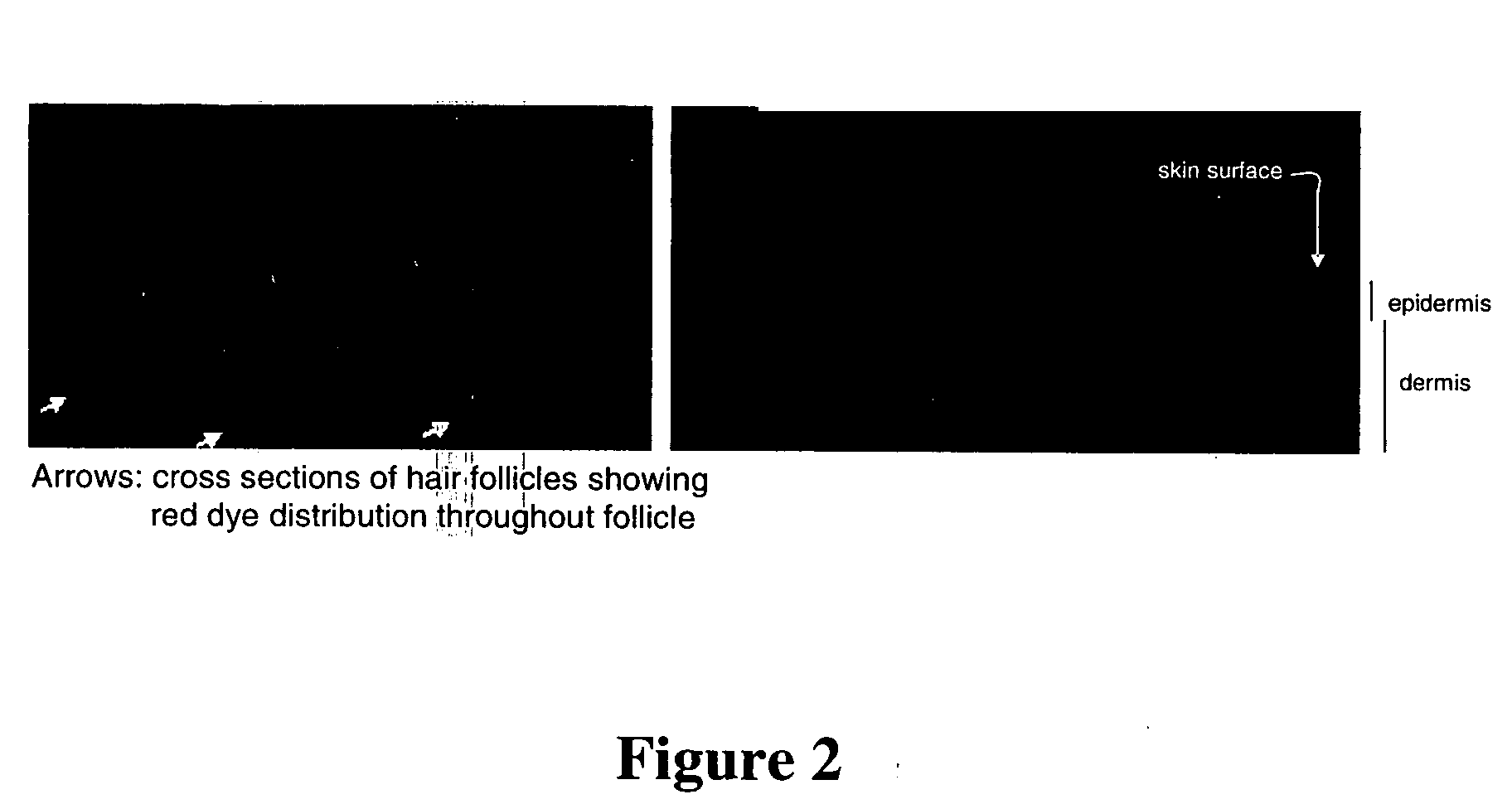Topical vasoconstrictor preparations and methods for protecting cells during cancer chemotherapy and radiotherapy
a vasoconstrictor and cancer technology, applied in the field of cancer therapy, can solve the problems of few, if any, treatments to prevent cancer therapy side effects, severe side effects of chemotherapy and radiotherapy used to treat cancer patients, and the full utility of chemotherapeutic drugs and radiation therapy, etc., to reduce or minimize any undesirable sensory properties of the orally administered preparation, reduce or preferably prevent oral mucositis, and reduce or minimize the effect of oral mucositis
- Summary
- Abstract
- Description
- Claims
- Application Information
AI Technical Summary
Benefits of technology
Problems solved by technology
Method used
Image
Examples
example 1
[0096] This example shows that topical application of epinephrine or phenylephrine in an ethanol:propylene glycol:water delivery vehicle confers drug concentration- and time-dependent blanching (vasoconstriction) of human skin. The 0.1% aqueous solution of epinephrine-HCl and the 0.25% aqueous solution of phenylephrine conferred no detectable blanching of the skin over the 180 min observation period of the experiment.
[0097] For these experiments, epinephrine-HCl (FW: 220) was dissolved in the indicated 50:25:25 (ethanol:propylene glycol:water) delivery vehicle and phenylephrine-HCl (FW: 204) in the indicated delivery vehicle. Aliquots of a given Topical Vasoconstrictor Formulation (e.g., 10 mM epinephrine) were applied (30 μl at 0 min, 15 μl at 15 min, 30 min and 45 min) to the same 2 sq. cm. skin patch of human skin (on arm), and the Skin Blanch Score was judged at the indicated times. The results are shown in Table 1-1.
TABLE 1-1Skin Blanch Response* (%)Topical Vasoconstrictor04...
example 2
[0098] This example shows that topical application of epinephrine or phenylephrine in an ethanol:propylene glycol:water delivery vehicle prevents radiation-induced dermatitis of rat skin in a concentration-dependent manner.
[0099] For these experiments, epinephrine-HCl (FW: 220) or phenylephrine-HCl (FW: 204) was dissolved in the indicated topical formulation (see Table 2-1). Rats (4-5 week old; backs were previously shaved) received a total of four topical applications to their back at −2 hr, −1 hr, −30 min, and −10 min, and then received 8.7 Gy of γ irradiation over a 4.5 cm2 area on their back at 0 min from a Cs137 source. The severity of dermatitis was scored 13 days later.
TABLE 2-1Radiation DermatitisTopicalScore (% of IrradiatedCageVehicle4.5 cm2 Area Free of#Topical TreatmentFormulation*Scab Material)751Vehicle25:30:456753100 mM epinephrine25:30:45100754100 mM phenylephrine25:30:4545756300 mM phenylephrine25:30:459571520 mM epinephrine50:30:20327161000 mM epinephrine50:30:2...
example 3
[0100] This example shows that topical application of epinephrine in an ethanol:propylene glycol:water delivery vehicle prevents alopecia in a concentration-dependent manner induced by whole-body radiation or Cytoxan.
[0101] For these experiments, epinephrine-HCl (FW: 220) was dissolved in the indicated topical formulation (see Table 3-1). Neonate rats (11 days old) received a total of four topical applications to their backs at −2 hr, −1 hr, −30 min, and −10 min, and then received either whole-body radiation (˜7.5 Gy [3.65 min] of γ irradiation from Cs137 source) or a single intaperitoneal injection of Cytoxan (32 μg / gm b.w.). The severity of the alopecia was scored nine days later—on day 20 of life.
TABLE 3-1Alopecia ScoreTopical(% Normal CoatVehicleAlopecia-Density inCageFormu-InducingTopical#Topical Treatmentlation*AgentTreatment Area)751Vehicle25:30:45Irradiation0757Vehicle25:30:45Cytoxan0757Vehicle25:30:45None1007561000 mM epinephrine25:30:45None1007531000 mM epinephrine25:30...
PUM
| Property | Measurement | Unit |
|---|---|---|
| Fraction | aaaaa | aaaaa |
| Fraction | aaaaa | aaaaa |
| Fraction | aaaaa | aaaaa |
Abstract
Description
Claims
Application Information
 Login to View More
Login to View More - R&D
- Intellectual Property
- Life Sciences
- Materials
- Tech Scout
- Unparalleled Data Quality
- Higher Quality Content
- 60% Fewer Hallucinations
Browse by: Latest US Patents, China's latest patents, Technical Efficacy Thesaurus, Application Domain, Technology Topic, Popular Technical Reports.
© 2025 PatSnap. All rights reserved.Legal|Privacy policy|Modern Slavery Act Transparency Statement|Sitemap|About US| Contact US: help@patsnap.com



